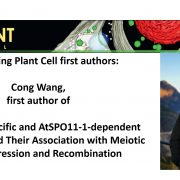
Recognizing Plant Cell first authors: Cong Wang
The Plant Cell, The Plant Cell: Author ProfilesCong Wang, first author of Meiocyte-specific and AtSPO11-1-dependent Small RNAs and Their Association with Meiotic Gene Expression and Recombination
Current Position: Ph.D. Biochemistry and Molecule Biology, Fudan University, China.
Education: B.S. Biological Science, Sep. 2009-Jul. 2013. Lanzhou…
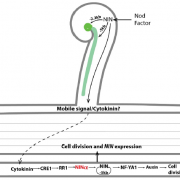
Solving a Cold Case: Identification of Promoter Elements to Complement Medicago nin Mutants
The Plant Cell, The Plant Cell: In BriefLegumes associate with beneficial soil bacteria called rhizobia to acquire plant-usable ammonia in a process called root nodule symbiosis (RNS). This association is so valuable for nitrogen starved legumes that they form specialized new organs to house them. These de novo organs, called nodules, develop…
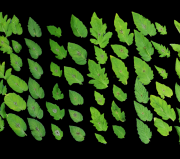
97 Shades of Gray: Genetic interactions of the gray mold, Botrytis cinerea, with wild and domesticated tomato
The Plant Cell, The Plant Cell: In BriefAlthough a vineyard full of decaying grapes infected with noble rot is a blessing for sweet wine producers, the causal agent, Botrytis cinerea (gray mold), causes huge crop losses. Unlike most plant pathogens, individual isolates of the necrotrophic fungus can infect an extremely broad range of plants,…
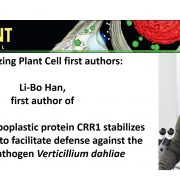
Recognizing Plant Cell first authors: Li-Bo Han
The Plant Cell, The Plant Cell: Author ProfilesLi-Bo Han, First author of The cotton apoplastic protein CRR1 stabilizes chitinase 28 to facilitate defense against the fungal pathogen Verticillium dahliae
Current Position: Associate professor of Haixia institute of Science and Technology, Fujian Agriculture And Forestry University, Fuzhou, China
Educations:…
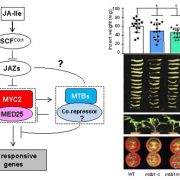
The mechanism by which MYC2 regulates the termination of jasmonic acid signaling
The Plant Cell, The Plant Cell: News
Source: Institute of Genetics and Developmental Biology Published: 2019-01-11. Translated from the original.
As an important plant hormone, jasmonic acid regulates plant defense responses and adaptive growth. When the plant is exposed to pests or other stresses, the active jasmonic…
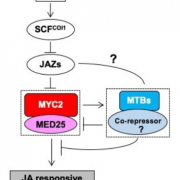
Master MYCs: MYC2, the jasmonate signaling ‘master switch’
The Plant Cell, The Plant Cell: In BriefTo optimize their fitness in the field, plants need to respond rapidly, specifically and dynamically to an ever-changing and often hostile environment. By integrating external environmental cues with endogenous developmental programs, phytohormones play a critical role in the cross-talk between signal…
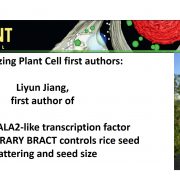
Recognizing Plant Cell first authors: Liyun Jiang
The Plant Cell, The Plant Cell: Author ProfilesLiyun Jiang, first author of The APETALA2-like transcription factor SUPERNUMRARY BRACT controls rice seed shattering and seed size
Current Position: Ph.D candidate, Department of Plant Genetics and Breeding, China Agricultural University, Beijing, China
Education: 2012–B.S., Agronomy, Jiangxi Agricultural…

A Root Endoploidy Map: The Spatial and Temporal Arrangement of Dividing and Endocycling Cells
Research, The Plant Cell, The Plant Cell: In a NutshellBhosale et al. computationally predicted and experimentally verified the DNA ploidy level of all cells in the Arabidopsis root tip, revealing that endoreplication is spatiotemporally regulated, stress-responsive, and likely important to coordinate cell expansion with changes in cell wall structure. Plant…
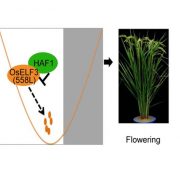
OsELF3 Rhythmicity Affects Flowering under Long-day Conditions
Research, The Plant Cell, The Plant Cell: In a NutshellOsELF3 Rhythmicity Affects Flowering under Long-day Conditions
Zhu et al. identify OsELF3 ubiquitination and degradation by HAF1 in rice. The Plant Cell (2018). https://doi.org/10.1105/tpc.18.00653
By Changyin Wu
Background: The photoperiodic response is one of the most important factors determining…

